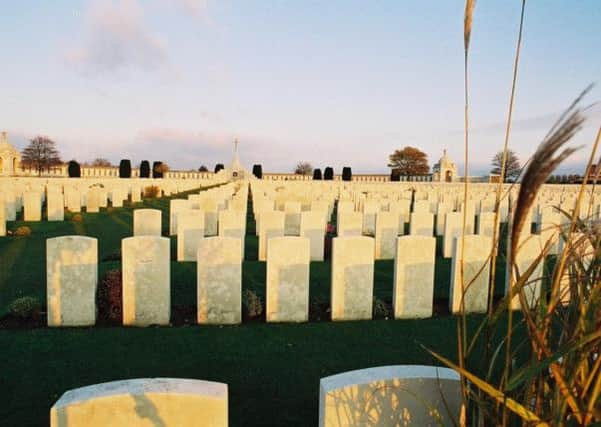Politicians pay WWI peace park tribute


Around 70,000 killed, injured or missing from Irish-raised regiments are commemorated at the Island Of Ireland Peace Park on Messines Ridge in Belgium.
One hundred years ago the First Battle of Ypres began with a massive German assault on the British-held region.
Advertisement
Hide AdAdvertisement
Hide AdWhen some British troops ran out of ammunition they charged the approaching enemy through a hail of fire using bayonets, historians said.
Frank Feighan from the Irish parliament, the Dail, said it was appropriate to recognise the shared suffering by men from across Ireland during a visit by parliamentarians from Britain and Ireland.
“I feel that consecutive Irish Governments airbrushed these men out of history and they had to grow up in a state which didn’t dare talk about the bravery, the suffering, the service that they gave, history forgot them but now is an appropriate time to remember.”
Soldiers from the four provinces of Ireland fought, some in the hope that Home Rule would be granted by Britain on the conflict’s conclusion.
But the 1916 Easter Rising by republicans transformed the Irish political landscape and led to independence.
Afterwards, Mr Feighan, said those who fought for Britain during the war were marginalised.
He added: “I felt that this was a history that the vast majority of people in the Republic had forgotten about and now that we have matured it is now very appropriate to remember the thousands of young men from both traditions across the island of Ireland who died.”
The British/Irish Parliamentary Association (BIPA) includes members from England, Scotland, Wales, Northern Ireland, the Republic, the Isle of Man, Guernsey and Jersey. Its members travelled to Flanders to mark the centenary.
Advertisement
Hide AdAdvertisement
Hide AdMr Feighan, the BIPA’s co-chairman designate, said shared commemoration helped bring the north and south of the island together.
The round tower at the peace park was built using stone from a quarry in Mullingar in the Irish Midlands. Apprentices from Northern Ireland and the Republic took part in its construction.
It can be seen from miles away along the mainly flat countryside and narrow winding roads of Flanders and the area surrounding Ypres.
The Messines ridge is a short distance away, part of a few miles of land which were repeatedly fought over during the 1914-18 conflict. The most famous battle was at Passchendaele.
At the peace park the writings of Irish poets are inscribed into the memorials, capturing the atmosphere of the time.
JFB O’Sullivan, who served in the 6th Connaught Rangers, wrote: “In a matter of seconds a hissing and shrieking pandemonium broke loose. The sky was splashed with light.”
Another poet spoke of the men battling over a few miles of liquid mud.
A chaplain, Francis Gleeson from the Royal Munster Fusiliers said he sat all night trying to comfort men lying in the “cold, cheerless” outhouses.
Advertisement
Hide AdAdvertisement
Hide AdInside the tower are records of those who died, behind bronze-coloured doors which bear an inscription depicting the going down of the sun and the 11th hour, when war ended.
Members of Northern Ireland’s assembly at Stormont Jim Wells and Judith Cochrane laid wreaths, one red poppy, one green laurel. Laurence Robertson MP, the co-chair of the BIPA, and Chris Ruane MP laid a wreath.
Nearby was the grave of Major Willie Redmond, a Catholic nationalist politician whose brother was the chief advocate of Irish war efforts. The plot is on its own near the Locre Hospice cemetery. A stone cross and a statue of Mary mark the plot.